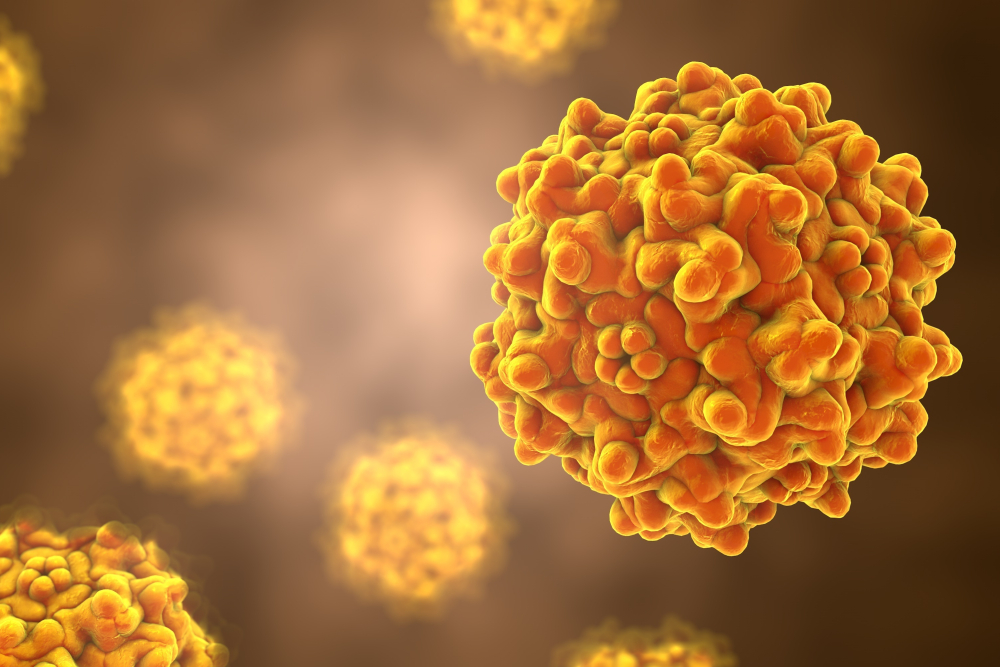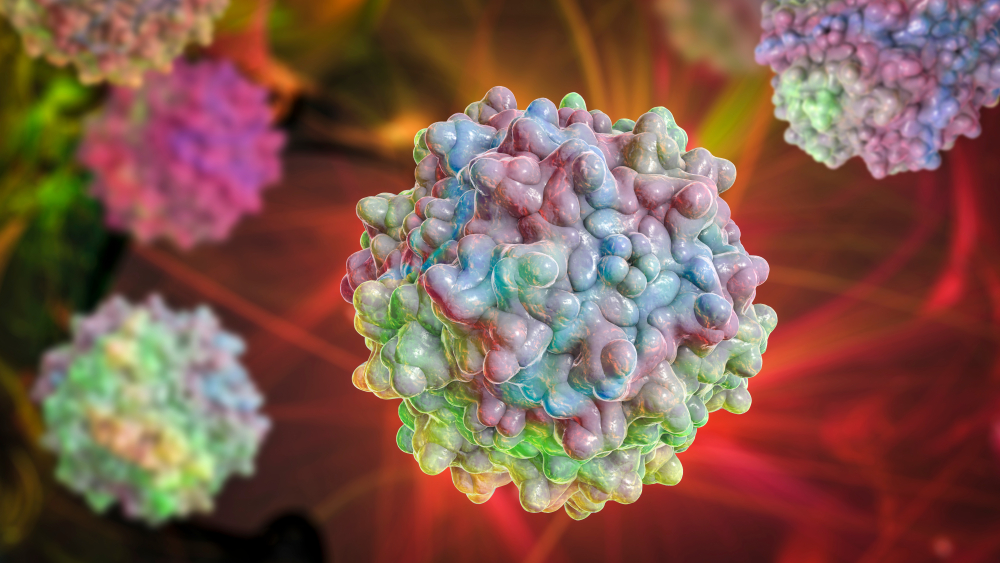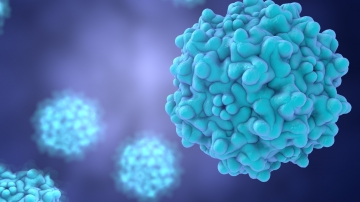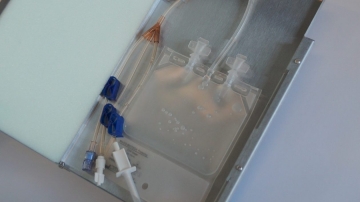AAV packaging services: Market overview
Table of contents
ShowServices for AAV packaging – the procedure of encapsulating a gene of interest within an AAV – are, among other AAV production services, highly requested, given the complexity of the overall AAV manufacturing process. Nevertheless, adeno-associated virus (AAV) vectors have emerged as indispensable tools for delivering therapeutic genes to target cells with remarkable precision, which is why services related to the production of these viral vectors are invaluable for gene therapy, drug development and production.
This article gives an overview of the most important aspects when exploring the AAV packaging services market: We will illustrate the overall manufacturing process, highlight different packaging systems and present examples of providers of AAV production services.
Adeno-associated viral vectors – invaluable in gene therapy
Adeno-associated virus (AAV) vectors are invaluable tools in gene therapy, providing precise and efficient gene delivery. In in vivo gene therapy, AAV vectors target specific tissues and organs, and hold promise for previously incurable genetic disorders. In vitro, these vectors support gene therapy research, enabling gene manipulation in cultured cells for potential therapeutic breakthroughs.
Their high transduction efficiency guarantees robust and sustained gene expression. Equally crucial, AAV vectors are engineered to manage immune responses, enhancing their safety in clinical use.
AAV serotypes and their diverse functions
There are different Adeno-associated virus (AAV) serotypes eligible for gene therapy, each with distinct characteristics and applications.
AAV serotypes are favored for their low immunogenicity, minimizing the risk of immune responses in patients. However, they differ in capsid proteins, influencing their tissue tropism and transduction efficiency.
AAV serotypes also play a pivotal role in AAV packaging by influencing the choice of vector for gene delivery. The specific serotype selected determines the capsid proteins, which, in turn, affect the tissue tropism and transduction efficiency of the AAV vector.
This selection is crucial in tailoring AAV packaging for precise therapeutic applications, optimizing the vector's ability to deliver therapeutic genes to target cells while minimizing potential immune responses in patients.
- AAV2: The pioneering serotype
AAV2 was among the first serotypes discovered, known for its versatility in delivering therapeutic genes.
- AAV9: Targeting the nervous system
AAV9 demonstrates a unique ability to cross the blood-brain barrier, which is important for neurodegenerative disease treatments.
- AAV1, AAV8, AAV6, and AAV5: Expanding the arsenal
These serotypes offer diverse options for specific gene delivery needs. AAV1. AAV5 and AAV6, for instance, are valued for their ability to target various cell types. AAV8, on the other hand, is celebrated for its liver-targeting qualities.
- AAV-DJ: A hybrid powerhouse
AAV-DJ is a hybrid serotype engineered to combine the advantages of multiple AAV serotypes. Its versatility and transduction efficiency make it a promising viral vector in gene therapy.1 2

AAV production workflow
AAV production, from plasmid design to the generation of functional adeno-associated virus (AAV) vectors with high titers for gene therapy, includes several steps
It starts with the design of a plasmid carrying the therapeutic transgene, promoter sequences, and regulatory elements. This plasmid serves as the blueprint for AAV vector production.
The engineered plasmid is introduced into a carefully selected host cell line, chosen for its ability to support efficient AAV cloning and minimize immunogenicity. Transfection methods, such as triple transfection or Baculovirus packaging, are employed to generate recombinant AAV particles.
Within the host cell, the plasmid directs the expression of the therapeutic transgene. Simultaneously, AAV vector components, including capsid proteins, are synthesized, leading to the assembly of functional AAV particles.
Purification strategies are applied to isolate AAV vectors from cellular contaminants. Characterization techniques, such as quantitative PCR (qPCR) and gradient centrifugation, are used to assess vector purity, titer, and genomic integrity.
Quality control assays, including SDS-PAGE analysis, are implemented to ensure the integrity of AAV particles. Nevertheless, safe, high-quality vectors are essential for successful gene therapy.
For specific applications, CRISPR technology and the green fluorescent protein (GFP) gene can be integrated to enhance vector functionality. Validation of inverted terminal repeat (ITR) sequences is conducted to ensure proper vector structure and function, a critical step in AAV quality assessment.
This well-structured AAV production workflow, carefully tailored from plasmid design to vector validation, yields AAV vectors with high genomic integrity, minimal endotoxin contamination, and suitability for diverse gene therapy applications, including cell therapy. Within this process, AAV packaging is an indispensable step: Once AAV particles are present, these are loaded with the gene of interest in order to achieve fully functioning AAVs ready for a specific use.
What is recombinant AAV packaging?
Recombinant adeno-associated virus (AAV) packaging is a central process in gene therapy vector production. It encompasses the creation of functional AAV vectors containing specific genetic payloads. The journey commences with the meticulous design of an AAV plasmid, which carries the gene of interest (GOI) and essential regulatory elements. Decisions regarding the AAV serotype are critical, influencing vector tropism and transduction efficiency.
Transfection methods are then employed to introduce the AAV plasmid into host cells, initiating the synthesis of AAV vector components, including capsid proteins that envelop the AAV genome, culminating in the formation of viral particles. During this process, the GOI is integrated into the AAV genome, resulting in recombinant AAV (rAAV) vectors, where the GOI replaces non-essential viral genes of the original pathogen.
Stringent quality control measures verify genome copies, assess viral particle integrity, and confirm purity, ensuring that the produced rAAV vectors meet rigorous standards.
AAV packaging services: transfection methods on the market
When making use of AAV packaging services, the choice of transfection methods is essential. These methods – either performed in the form of stable or transient transfection – are central to introducing the AAV plasmid into host cells, where viral vector components are synthesized, culminating in the creation of functional AAV particles. Typically, AAV packaging is either performed with triple transfection or baculovirus packaging.3
Triple transfection in AAV vector production
Triple transfection is a sophisticated and indispensable technique in adeno-associated virus (AAV) vector production, offering precision and efficiency in gene therapy. This method involves the simultaneous introduction of three crucial components into host cells, often by the means of transient transfection: the AAV plasmid housing the therapeutic genes, a helper plasmid, and an adenovirus helper plasmid.4
The helper plasmid aids in AAV genome replication, while the adenovirus helper plasmid promotes capsid formation. These synchronized steps within host cells result in the assembly of functional AAV vectors.
There are several AAV packaging service providers on the market that make use of triple transfection, including:
Baculovirus packaging is a sophisticated technique frequently chosen for adeno-associated virus (AAV) vector production.
In Baculovirus packaging, a baculovirus vector is employed to introduce the AAV viral genome into host cells. Once inside, this viral genome orchestrates the synthesis of AAV vector components and the desired therapeutic genes, culminating in the production of functional AAV vectors.
This method represents a robust strategy for elevating AAV vector production, carried out by AAV packaging service providers like VectorBuilder.

Further solutions for streamlined AAV production
There is a widespread variety of different services around AAV production, such as AAV packaging discussed in this article. However, this is only the tip of the iceberg, considering the complexity of custom AAV production and the ongoing trend of outsourcing different production steps to CDMOs or relying on entire production services – from development to shipping deliverable AAV-based products.
Along with the scale-up in AAV production (but also other viral vector systems, such as lentivirus vectors) comes the need for optimization at every production step – in terms of efficiency, safety, cost-effectiveness and sustainability. And in response to the rising need for suitable processing approaches, Single Use Support provides innovative solutions for streamlined AAV manufacturing. These solutions – from fluid management and freeze/thaw platforms to primary packaging – are based on single-use technologies and offer several advantages to AAV production:
- maximized process flexibility and scalability
- reduced need for manual intervention due to a high level of automation
- enhanced sustainability
- increased resource- and cost-effectiveness
- reduced need for laborious cleaning
- Various AAV Serotypes and Their Applications in Gene Therapy: An Overview, http://dx.doi.org/10.3390/cells12050785, Published 2023-03-02
- Single point mutation in adeno-associated viral vectors -DJ capsid leads to improvement for gene delivery in vivo, http://dx.doi.org/10.1186/s12896-015-0230-0, Published 2016-01-05
- What Is Adeno-Associated Virus (AAV) Packaging?, https://www.bosterbio.com/blog/post/what-is-adeno-associated-virus-aav-packaging, Published 2022
- Improved production of recombinant AAV by transient transfection of NB324K cells using electroporation, http://dx.doi.org/10.1016/S0166-0934(96)02121-0, Published 2002-07-26









